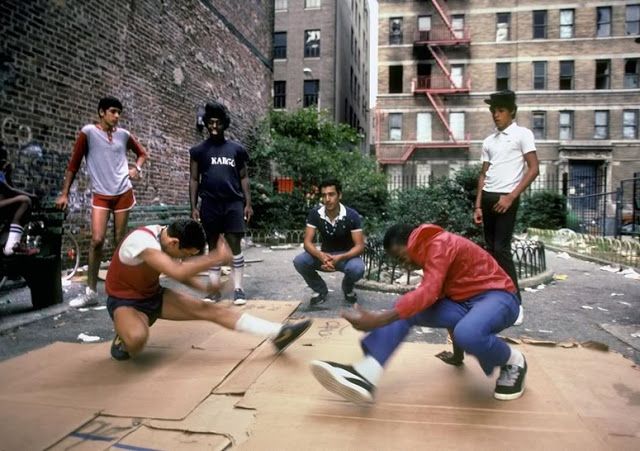Breakdance Music – How Dancing Helped Birth a Musical Revolution
With Breaking debuting at the Paris Olympics, the spotlight is shining on this remarkable art form like never before. While the spectacular, seemingly impossible dance moves will capture most of the attention, the musical accompaniment to the breaking plays an equally crucial role. As we will discover, the music and dance of Breakdancing or B-Boying to give it its proper title, are deeply intertwined. So much so this symbiotic relationship helped give rise to one of the most significant cultural movements of our time – Hip-Hop. So let’s dig into Breakdance Music and how it all came about.
The Origins of Breakdancing and Hip-Hop Music
11th Aug 1973 – The Party Starter!
While there is still some debate on hip-hop’s early timeline, the 11th Aug 1973 has been widely accepted as representing the birth of the culture. On this day in 73, a party was thought to have been held by emerging local Jamaican-born DJ Kool Herc. At this party, Herc would famously debut a new DJing technique he coined as the merry-go-round technique. This involved switching back and forth between two copies of the same record to extend the break sections.
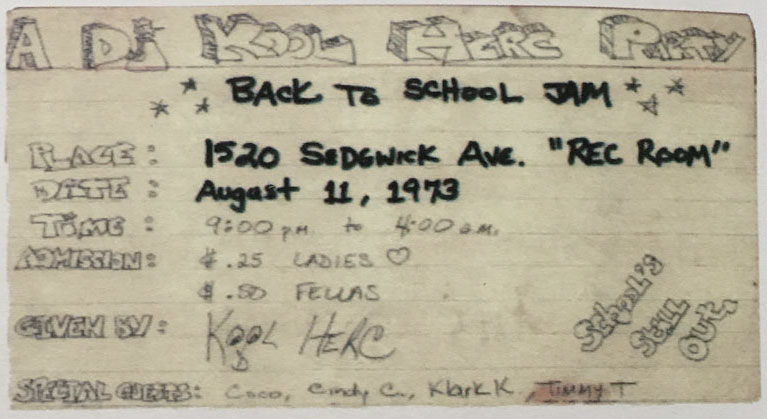
But why choose to extend these sections? Herc had observed a growing trend of dancers reacting with extreme vigour and gymnastic prowess to these stripped-down rhythmic passages, or breaks as they later became known. He was merely reacting to this phenomenon in order to prolong the energy on the dancefloor. A technique that proved extremely popular with his crowd, in turn, propelling Herc to near-legendary status in the Bronx.
For a detailed analysis of this mythical party check out this article.
These are the Breaks – A B-Boying Blueprint
When all is said and done it’s the influence of the breakbeat that has served to fuel the entire hip-hop movement. It was the breaks that inspired the energetic improvised dancing that would morph into breakdance. In turn, It was the breaks that would influence DJ’s to mix in a more creative, entertaining and technically precise manner.
And once DJ’s started to extend these breakbeats, MC’s, whos original job was to simply hype the crowd, soon started to develop more complex rhythmic rhyming patterns. Enter rapping! And the resulting hip-hop or rap music would go on to kickstart sampling in music as well as generally influencing all forms of music.
To better understand what constitutes a great breakbeat, here’s a rundown of some of the most iconic B-Boy Breaks
- Apache – The Incredible Bongo Band
- Just Begun – The Jimmy Caster Bunch
- UFO – ESG
- Give it up or turnit a loose – James Brown
- The Mexican – Babe ruth
- Take me to the Mardi Gras – Bob James
- Dance to the Drummer’s Beat – Herman Kelly & Life
- Trans-Europe Express – Kraftwork
- Scorpio – Dennis Coffee
- Big Beat – Billy Squires
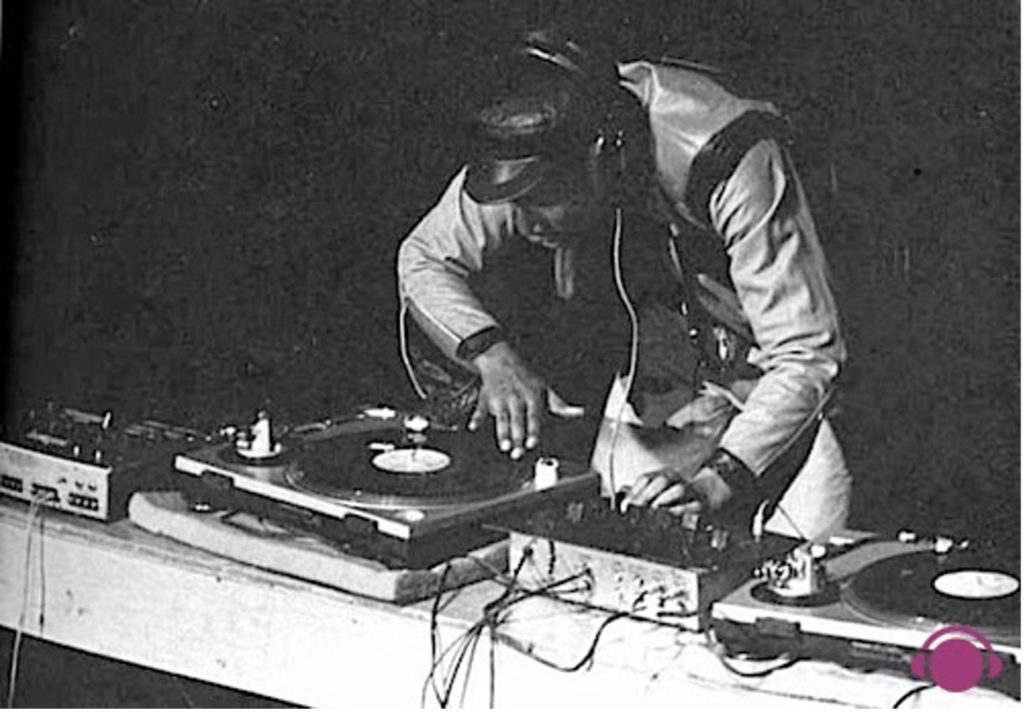
B-Boy’s and B-Girl’s
It would be many years before the term breakdancing or hip-hop would be widely used. Instead during the early to mid 70’s those participating in this emerging scene were known as B-Boys or B-Girls. The ‘B’ is thought to represent “Break” which in turn refers to the break section or breakbeat. These B-Boys/Girls were typically teenagers and this outlet which also had it’s own dress code, represented a form of self-expression. A potential response to the brutally harsh and impoverished environment of The Bronx in the 70s.
Pioneering B-Boy/Girl Crews
During the furtile period of the mid to late 70’s B-Boy crews started to emerge from different areas throughout NYC. Each crew would have their own unique styles and DJ affiliations. These crews often shared affiliations with the street gangs of the time. Unlike the territorial violence and intimidating nature of these street gangs the burgeoning B-Boy culture focused more on skills, creativity and style. An aspect that was very much recognised and nurtured by original Black Spade gang member Afrika Bambaataa. He went on to form the Universal Zulu Nation. A pioneering movement that embraced many aspects of B-Boy culture and is still going strong today. The Zulu Nation promoted the key values of Peace, Love, Unity and having fun.
As the 70’s progressed a number of crews began to gain a higher level of recognition. Some of the top crews of this era include The Zulu Kings, The dynamic Rockers and most famously The Rock Steady Crew. The Rock Steady Crew led by Breaking legend Crazy Legs would later become instrumental in spreading breaking to the rest of the world.
For a detailed first-hand history of this era check out this insightful interview with Zulu King member Cholly Rock.
Pioneering Early DJs
We have already established that the relationship between breakdancing and the accompanying music provided by the DJs is integral. While Kool Herc is recognised as the father of hip-hop, around this time, other DJs would start to expand on Herc’s blueprint. Early pioneers include DJ Flowers, DJ Mario, The Disco Twins and The original DJ Clark Kent.
As the decade progressed two DJs would emerge as torchbearers for the further development of hop-hop DJing. That of Grandmaster Flash and Afrika Bambaataa. Flash famously refined and perfected the technique of extending the break section. He also started to incorporate rudimentary scratching. A technique first developed accidentally by a DJ called Grandwizard Theodore.
While Bambattas legacy has been sullied by recent unsavoury allegations, his contribution to the development of the B-Boy style of DJing is undisputable. He was known as the king of records with his selections extending way beyond the realms of James Brown esc funk and soul. Recognising and responding to the rhythmic demands of B-Boys and B-Girls, Bambatta played an eclectic selection of records to include, rock, pop, Jazz, electronic and global music. German electronic pioneers Kraftwork for example would find themselves in the mix alongside UK rockers Babe Ruth.
The 1980s Breakdance Explosion
In the early 80s, breakdancing rapidly spread from its roots in NYC to quickly become a global phenomenon. This expansion was fueled by a combination of media exposure, influential performances, and local grassroots movements. Crews like the Rock Steady Crew and the New York City Breakers would be instrumental in spreading the word of hip-hop. They toured the world making appearances at international events as well as featuring in many news items. It was however their show-stealing breakdance battle against the New York city Breakers in the movie Beat Street that would cement their reputation and inspire a whole new generation of youngsters to borrow an offcut of lino and attempt a head spin.
Other influential films included Breakdance (Breakin’) 1 & 2, Wildstyle and Style Wars. It was the inclusion of Grafitti, Scratch D.Jing and rapping in these films that helped to establish hip-hop as a cultural phenomenon encompassing many different elements. The exchange of bootlegged VHS tapes also played a crucial role in spreading breakdancing techniques and styles, fostering a global community of B-boys and B-girls who embraced and evolved the art form.

Electro Music- Breaking in Space
The breakdancing phenomenon of the 1980s was propelled by a distinctive musical backdrop. Gone were the live breakbeat-inspired DJ sets of the past, replaced instead by a new wave of hip-hop and electro recordings. Early rap records would feature live reinterpretations of popular breaks such as the Sugerhill Gangs Apache that replays the incredible bongo band break of the same name.
It was however Afrika Bambaataa and the Soul Sonic Force that would revolutionise the soundtrack of breaking during this era with their seminal Planet Rock. This ground-breaking record released in 1982 would help to establish a new sound known as Electro Funk or Electro for short. Planet Rock set the template that countless others would follow (see below) This futuristic new sound would become the primary soundtrack to breaking during the 80’s era.
Top 10 80’s Electro Funk Breaking Anthems
- Planet Rock – Afrika Bambaataa and the Soul Sonic Force
- Breakers Revenge – Arther Baker
- Al-Naffiysh – Hashim
- Jam on it – Nucleus
- Clear – Cybotron
- Electric Kingdom – Twilight 22
- Egypt Egypt – Egyptian Lover
- Reckless – Chris the Glove Taylor
- Looking for the perfect beat – Afrika Bambaataa and the Soul Sonic Force
- Hip-Hop Bee-Bop – Man Parrish
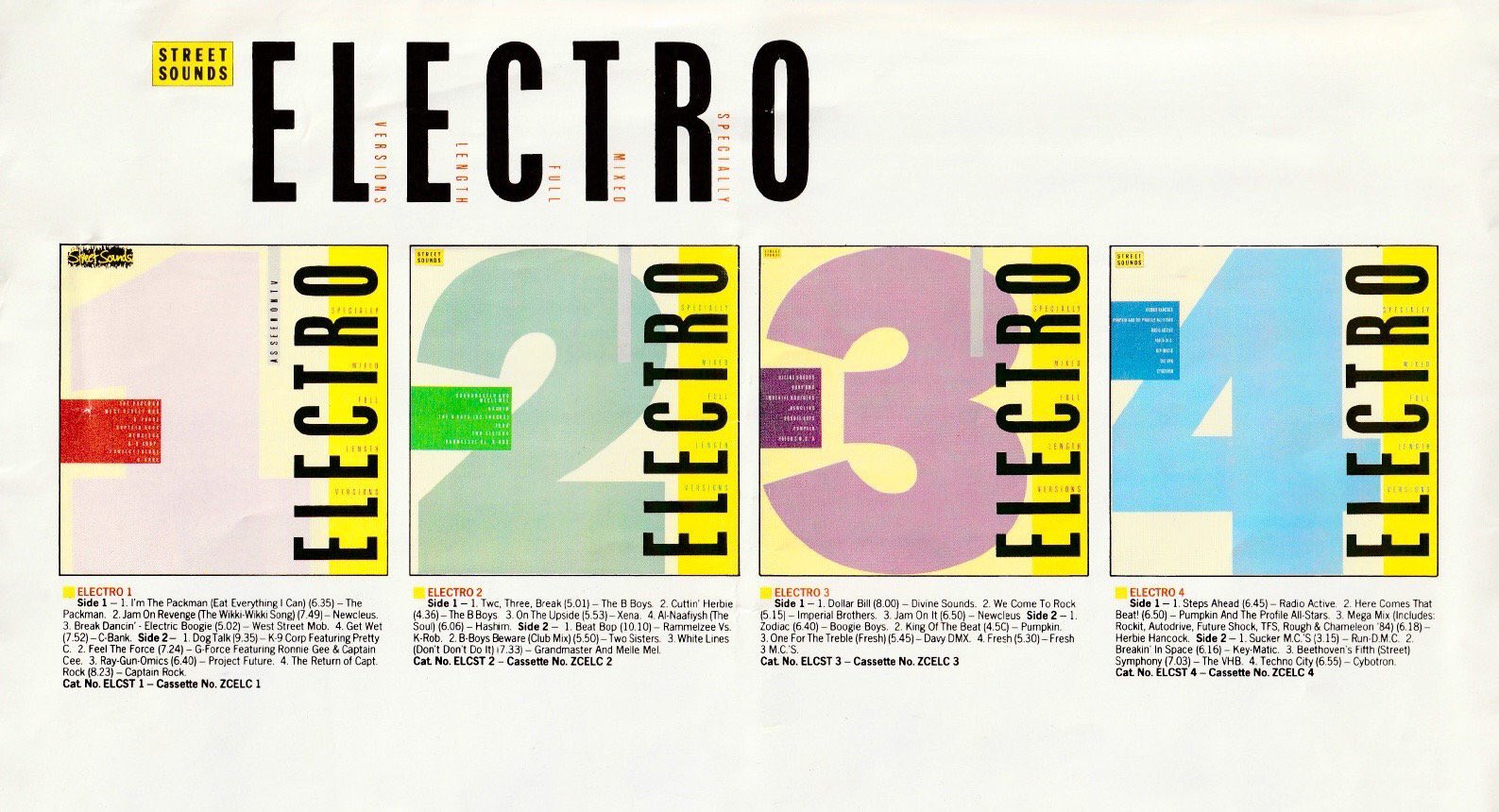
Breaking’s New Era.
The feverish popularity of Breaking in the 80’s would not last forever. While it had a good innings of three or four years it’s popularity would eventually wane. But the flame was not to be fully extinguished. Instead Breaking went underground. Throughout the globe, dedicated enthusiasts and practitioners continued to nurture the art form in small localised pockets.
By the early 1990s, breaking began to slowly resurface. This was driven in part by a resurgence of interest in the cultural significance of Hip-Hop and its history. Global competitions and events were beginning to be organised including the famous Battle of the Year. While home-grown U.S. based crews had once ruled the lino, international crews were now emerging along with incredible new power moves. Korean Breakers led this new wave of Breaking and through traded VHS tapes and the burgeoning internet, a new audience began to emerge.
Breakdance Music goes back to it’s Roots
With the renaissance of breaking came a new soundtrack. While elements of electro and 80’s hip-hop remained the emphasis largely returned to the breakbeat. Breaking battles would be set ablaze to the sounds of uptempo driving funk breaks being cut up by skilled DJ’s. Records of this nature would be referred to as B-Boy Breaks. These breakbeats would be used to great effect in new edits and dancefloor-friendly compositions by artists like Deadly Avenger and DJ Krush.
From the South Bronx to the Paris Olympics
Breaking’s acceptance as an Olympic sport is a testament to its enduring influence and cultural significance. Once considered nothing more than a craze it has persevered and developed into a competitive art form to rival that of traditional disciplines such as gymnastics. All this driven by the inspiring force of the breakbeat.
Whether you consider it to be a sport or art form, the inclusion of breaking in the 2024 Paris Olympics marks a historic milestone. This acceptance reflects decades of evolution, from spontaneous battles to highly organized and stylized performances.
Olympic Breaks
For the Olympics, dancers will face the unique challenge of adapting to pre-selected music. According to reports the final 16 competitors will not know what music they will perform to. This will require them to demonstrate their skills in real-time. This approach will not only test their adaptability but also ensure a diverse and dynamic showcase of breaking’s artistry on a world stage.
It has been confirmed that DJ Fleg will have the honour of DJing for the Paris Olympics Breaking events. Fleg is a well respected DJ within the BBoy community so should be well-equipped to provide the perfect sonic backdrop. With his appreciation of Breaking’s roots, a mix of classic breakbeats and contemporary tracks is thought to be on the cards. This will help to highlight the rich heritage and modern innovation inherent in Breaking.
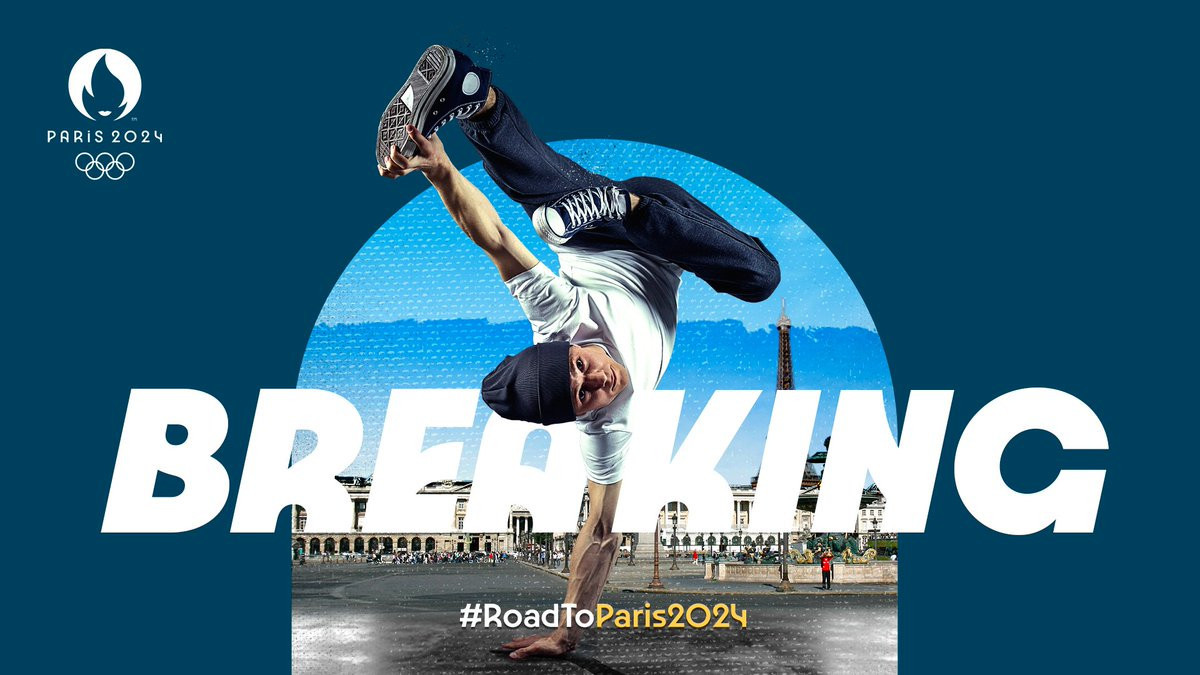
Summary
It is hard to underplay the cultural significance of BBoy culture within the sphere of hip-hop. First developed as a form of expression and escapism from the harsh realities of the Bronx in the 70s, it has survived the odds to now become an Olympic discipline.
Musically BBoying was the key element that first inspired DJs to explore innovative record selections and techniques such as Herc’s pioneering Merry-go-round. This in turn led to the establishment of the Breakbeat. A now widely accepted musical linchpin that through hip-hop production went on to birth the technique of sampling. It also helped inspire Electro music which would be the first music genre to embrace the iconic Roland TR808 drum machine. Many also believe that Electro was a direct descendent of Detroit and Chicago House.
And we haven’t even delved into the stylistic influence of B-Boy culture. It has pioneered such iconic fashion trends as sneakers, sportswear, Name Plate belt buckles, and Kangal Hats as well as popularising the boom box.
So, it’s fair to say, that when it comes to global cultural impact, the influence of B-Boys and B-Girls, along with the art form of breaking, is truly unparalleled.
Remember – RouteNote Create subscriptions start from as little as $2.99. You also get 10 FREE credits to spend on samples along with access to our FREE sample pack bundle when you sign-up!
